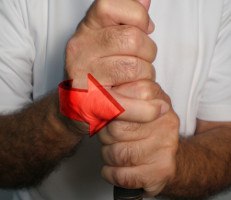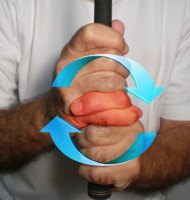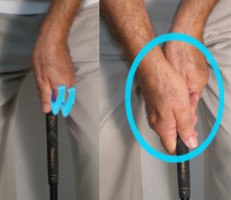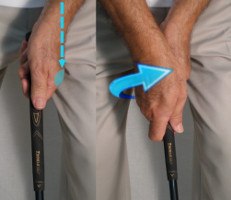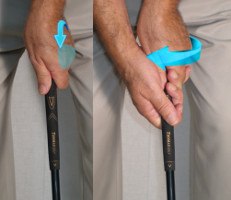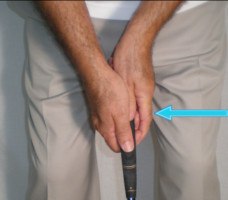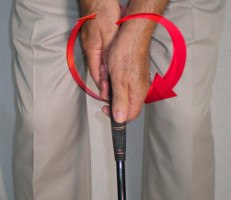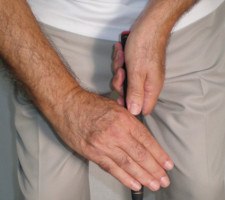Pros and Cons of Every Golf Grip Style |
Best Grip? Overlapping vs Interlocking |
Grip style: Vardon (overlapping)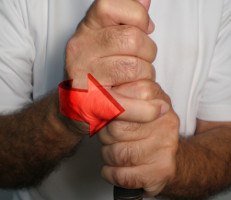 |
Hand Position: Weak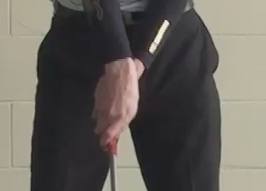 |
Putting grip style / hand position: Reverse overlap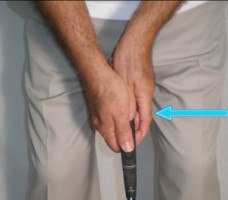
|
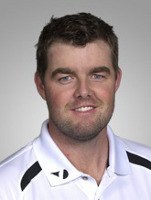
Weak grip. Strong player. The two don’t often go, ahem, hand in hand. But Marc Leishman’s grip proves that turning your palms toward the target can produce great shots.
Famous golfers with weak grips are few and far between. Ben Hogan was the best (and best known) of the bunch; 1995 U.S. Open champ Corey Pavin grips weakly as well. Today’s game, however, often seems like a battle to see who can grip the strongest and hit the longest.
Leishman doesn’t take the bait. The sturdy pro from Australia, who stands 6’2”, 200 pounds, rotates his left hand to his left so that the grip’s logo is just about perpendicular to the target line. That’s a sharp contrast to strong grippers like Ryan Palmer, whose logo is closer to parallel with the target line.
Leishman’s right hand maintains a basically neutral position; the “V” formed by thumb and forefinger aligns nicely with the club’s shaft.
With a grip designed for consistency, it’s no wonder Leishman is one of the PGA TOUR’s steadiest performers. He’s finished in the top 65 of the FedEx Cup standings every year since 2009.
He’d fare even better if he made more putts. On the greens, Marc Leishman’s grip is a conventional reverse overlap. It looks solid, as does Leishman’s arms-and-shoulders stroke. Unfortunately, he’s finished on the positive side in strokes gained putting just twice since 2009.
Still, Leishman continues popping up on the leaderboard thanks to his excellent long game. In his case, a weak grip is definitely not a weakness.
